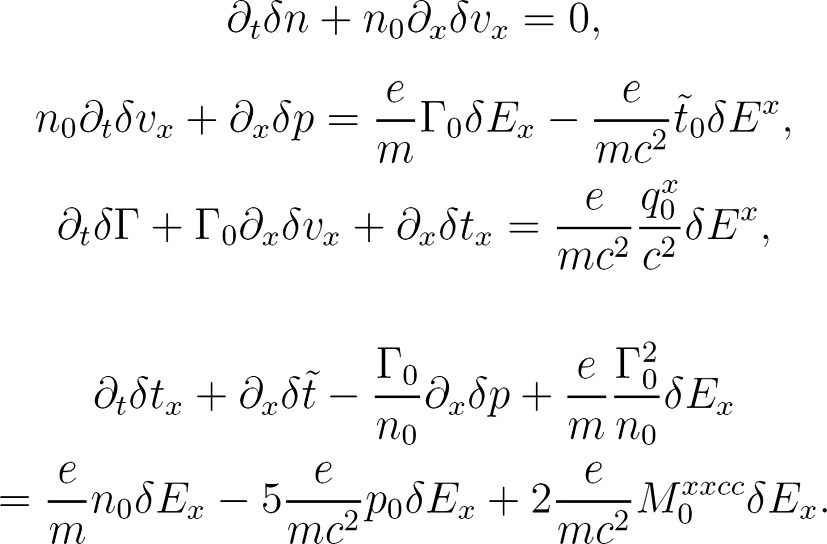https://doi.org/10.1140/epjd/s10053-023-00730-5
Regular Article – Plasma Physics
Microscopic model for relativistic hydrodynamics of ideal plasmas
Department of General Physics, Faculty of physics, Lomonosov Moscow State University, 119991, Moscow, Russian Federation
Received:
16
January
2023
Accepted:
10
July
2023
Published online:
22
July
2023
Relativistic hydrodynamics of classic plasmas is derived from the microscopic model in the limit of ideal plasmas, while the microscopic description assumes the level of dynamics of individual particles and the kinetic models look as the macroscopic models in this approach. The chain of equations is constructed step by step starting from the concentration evolution. It happens that the energy density and the momentum density do not appear at such approach, but new relativistic hydrodynamic variables appear in the model. These variables has no nonrelativistic analogs, but they are reduced to the concentration, the particle current, the pressure (the flux of the particle current) if relativistic effects are dropped. These variables are reduced to functions of the concentration, the particle current, the pressure if the thermal velocities are dropped in compare with the relativistic velocity field. Final equations are presented in the monopole limit of the mean-field (the self-consistent field) approximation. Hence, the contributions of the electric dipole moment, magnetic dipole moment, electric quadrupole moment, etc., of the macroscopically infinitesimal element of volume appearing in derived equations are dropped.
Copyright comment Springer Nature or its licensor (e.g. a society or other partner) holds exclusive rights to this article under a publishing agreement with the author(s) or other rightsholder(s); author self-archiving of the accepted manuscript version of this article is solely governed by the terms of such publishing agreement and applicable law.
© The Author(s), under exclusive licence to EDP Sciences, SIF and Springer-Verlag GmbH Germany, part of Springer Nature 2023. Springer Nature or its licensor (e.g. a society or other partner) holds exclusive rights to this article under a publishing agreement with the author(s) or other rightsholder(s); author self-archiving of the accepted manuscript version of this article is solely governed by the terms of such publishing agreement and applicable law.





